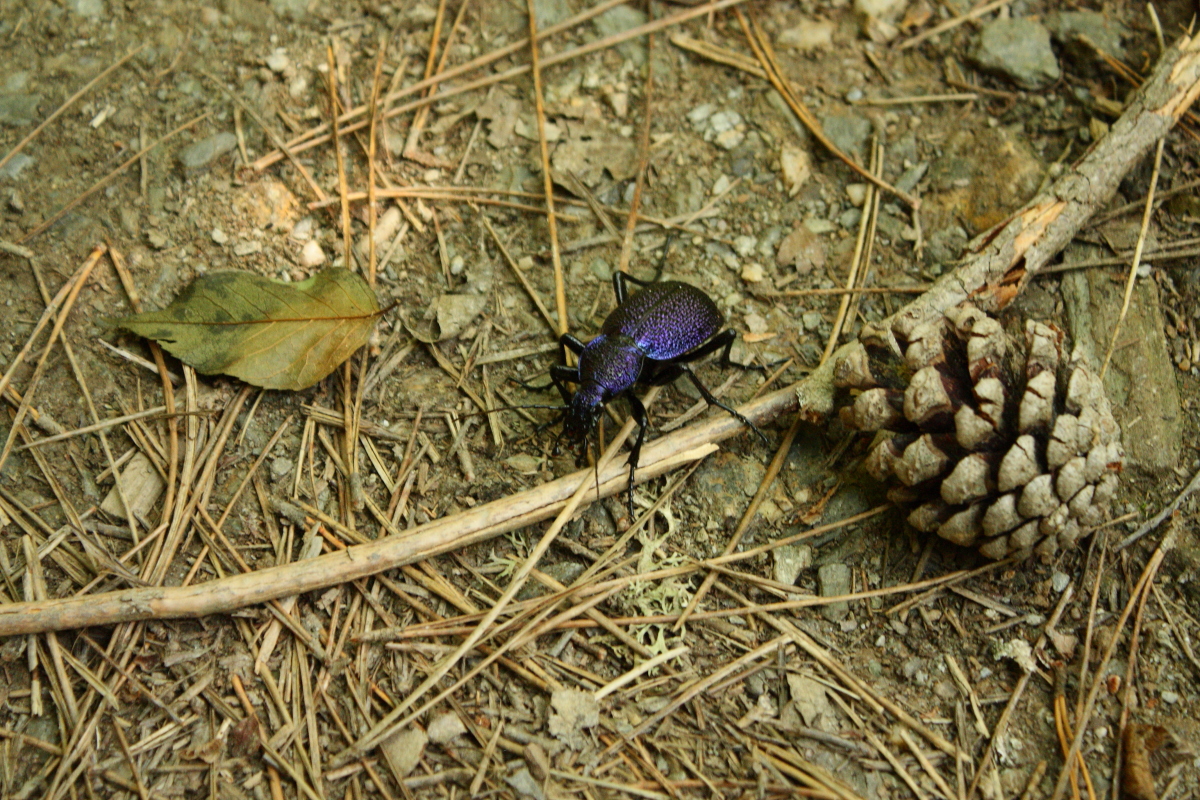Animals
Among the invertebrates in the Park conservation significance are 164 species. Relic are 34 species and 4 species of endemic and 80 are local Bulgarian. In the World Red Book includes 16 species, while the EU -10.
Natural Park "Strandja" is Bulgarian protected areas with the most abundant vertebrate fauna - 404 species.
By its fish wealth park is among the first in Europe. Inside the Strandja established and 41 species of freshwater fish passage and another 70 species inhabit coastal marine areas of the park. According to this indicator it is among the first in Europe. The number of relict species is large - Ponto-Caspian 9 (preserved from the times of the ancient Sarmatian Sea) and 5 Boreal relicts (from Latin - Vorealis - "northern" species originating northern regions of Eurasia and North America and reach our latitudes during the Quaternary cold.
Endemic species in the Black Sea basin 7: endangered (Rutilusfrisii), chernoivichestata needlefish (Syngnathusabaster), shirokoglavoto goby (Neogobius cephalarges), river goby (N.fluviatilis), Strongile (N.melanostomus), lihnusat (Mesogobius batrachocephalus) and small Flat-goby (Mesogobiusgymnotrachelus). Marble goby (Proterorchinusmarmoratus) and sea perch (Stizostedion marinus) are endemic to the Black Sea and the Caspian basin. Balkan endemics are no longer only small loach (Cobitispeshevi). Alosa or harip (Alosacaspiabulgarica) is localized only on the southern Bulgarian coast.
In World Red List includes 12 species of freshwater fish. In the European Red List is saved form wild river trout, and in the national Red Data Book - 8 species, including triiglata stickleback, wild carp and Brianna.
Within the Nature Park established nine species of amphibians - more than half of the 16 Bulgarian species. Threatened at the global and European level are tree (Hylaarborea), endemic subspecies of spadefoot (Pelobatessyriacusbalcanicus), and the large three tons (Triturus).
In Strandja established 23 species of reptiles, and global significance have populations of 11 species. Thracian population of Black-strelushka (Coluberrubricepsthracius) - local endemic subspecies of the South coast, constitute half of the world. Rare species are common and Turtles, and Hermann spur-thighed tortoise, rat snake, snake, and zhaltokoremnikat, forest lizard and gecko.
Within the park are identified 269 bird species, representing two thirds of all Bulgarian avifauna. In Park nests globally threatened corncrake and the Southern woodpecker ancient forests of Strandja is the second most important protected areas in the world. World-class populations are Semi-, the Olive Warbler and Sombre Tit and a European - Egyptian vulture, the black and the white stork, owl and four types of eagles.
Goes over Strandja second largest migratory route of birds in Europe - Via Pontica, which brings flocks of northern and eastern Europe and Siberia. The importance of the park is complemented by the bays and estuaries along the Black Sea coast, used by waterfowl not only for recreation, but for winter.
Within the park there are 62 breeding species of mammals. Bear disappeared at the end of the eighteenth century, and the presence of lynx in the middle of the twentieth century has not been scientifically documented. There are sporadic reports of eyewitnesses that individuals of monk seal sporadically visit the sea caves near Silistar.
Bats are 21 species, 12 of which are present in the World Red List (long-eared bat, bat Mediterranean, etc.).. Small mammals are 27 species in the World Red List are 8 types of rodents (ground squirrel, little blind dog, three species of dormice, gyunterovata vole and small Harvest mouse).
Customary Nature Park among large mammals are deer, red deer and wolf. Widespread are wild boar and jackal. Often found the fox, badger, marten, etc.. Populations of otter and wild cat are among the largest in Europe. Rare in the park are the marten and the European polecat. In World Red List includes Polecat, Otter and the monk seal.
|
 



|
